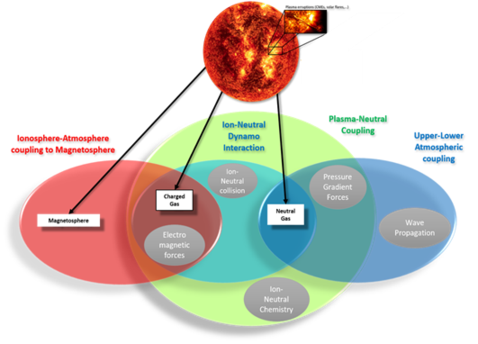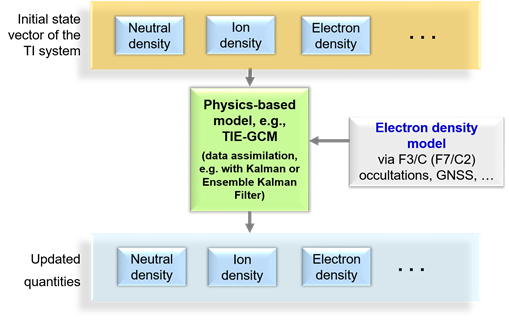Development of an operational prototype for the determination of the thermospheric density on the basis of a coupled thermosphere-ionosphere model (TIK)

The thermospheric drag is of particular importance with respect to the determination and propagation of the trajectories of Low Earth Orbiting (LEO) objects as it represents the most important deceleration effect within the object’s equation of motion.
Today, the prediction of the thermospheric drag is usually carried out by empirical thermosphere models driven by globally defined space weather parameters such as the F10.7 (reflecting solar activity) index and the K_p (reflecting magnetic activity) index. For a better understanding and modelling of the thermospheric drag, an improved knowledge of the highly variable external driving parameters is required. For that purpose, the coupled thermosphere-ionosphere (TI) processes have to be considered which describe the interaction of the neutral density of the thermosphere with the electron density of the ionosphere. Figure 1 shows the main coupling processes between the lower atmosphere and the magnetosphere as the highest layer of the atmosphere. Solar flares and coronal mass ejections (CMEs) have impact on several layers in rather different ways. If plasma, ejected by the Sun, is transported straight to the Earth
- the geomagnetic field is directly influenced by the charged particles of the plasma,
- the moving plasma causes an enhanced ionization within the plasmasphere and the ionosphere due to an increase of colliding processes between the terrestrial and the extraterrestrial particles and
- the moving plasma causes a heating process of the neutral particles within the thermosphere.
The main goal of TIK is the representation of the thermospheric density as a function of the ionospheric electron density considering the TI processes by means of the physics-based coupling model TIE-GCM (`Thermosphere-Ionosphere-Electrodynamics General Circulation Model`). One main task of the project will be the setup of a high-resolution model of the electron density calculated from a suite of observation techniques such as GNSS and, in particular, the two radio occultation measurement missions Formosat-3/COSMIC and Formosat-7/COSMIC2. Following the procedure shown in Fig. 2 a heuristic model of the thermospheric drag as a function of the electron density including a prediction part for operational use will be developed.

Arcisstraße 21
80333 München